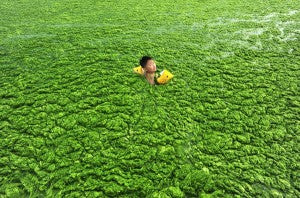
Photo Courtesy of National Geographic
The state governments of Wisconsin and Florida have fact sheets available to clear up some of the misinformation about blue-green algae and help people avoid harm. The Florida Department of Environmental Protection’s page emphasizes the importance of keeping pets from playing in or consuming “icky-looking and smelly” (their words) water. And Wisconsin’s Department of Natural Resources strikes at one of the roots of the problem, cautioning residents against over-fertilization, since runoff feeds algae and leads to unnaturally aggressive growth. Besides vacationing somewhere other than the southwest shores of the Great Lakes, there are one or two things we can do to minimize our exposure to harmful algae. Check out the facts and tips in these water storage posts. Stay safe on the beach this summer, friends, and keep your drinking water clean and slime-free! --Stacey
1 comment
linda
looks like an opportunity to harvest the algae and find a use for it. it would clean up the water ways, and is useful for probably putting on the garden, feeding to livestock, etc. could be a blessing just need an entrepreneure to harvest and find a market.